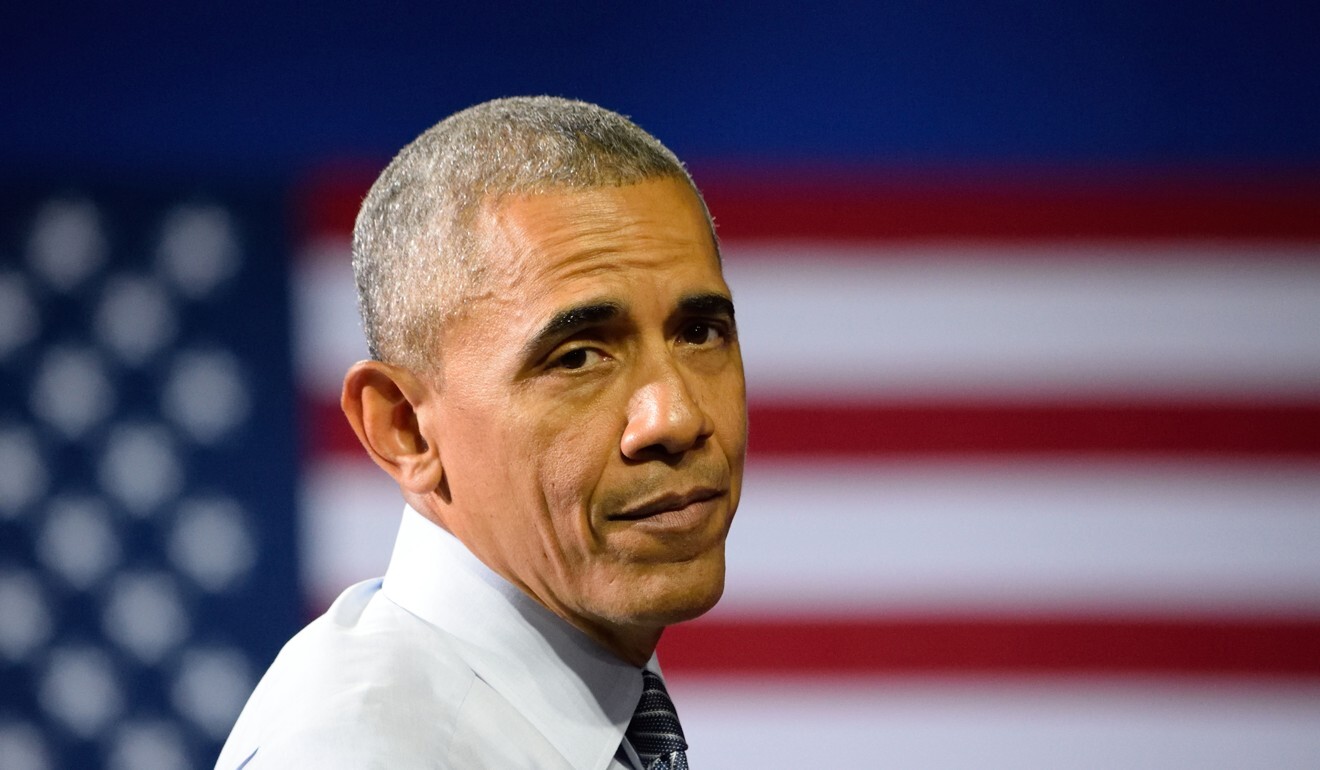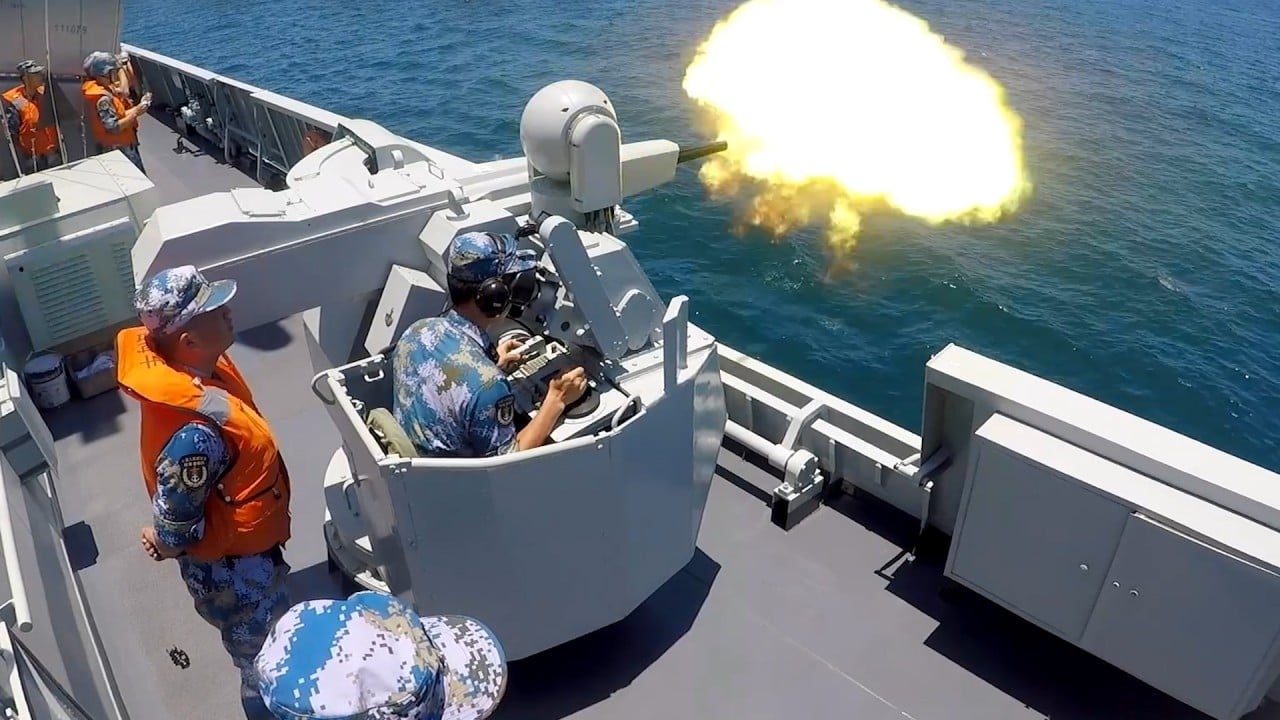
South China Sea: ‘If China attacks our navy, we’ll call the US’, Philippines says
- In a first under the Duterte administration, Manila says it is prepared to invoke its Mutual Defence Treaty with the US in the face of Chinese aggression
- Foreign Secretary Teodoro Locsin Jnr also vows to continue air patrols over the South China Sea that Beijing has denounced as ‘illegal provocations’
Explained: Why are tensions running high in the South China Sea dispute?
“[But if] something happens that is beyond incursion but is in fact an attack on say a Filipino naval vessel … [that] means then I call up Washington DC,” he added.

01:05
‘China has the arms, we do not’, Duterte rules out confronting Beijing in the South China Sea
Pressed by presenter Karen Davila on the circumstances that would make Manila make the call to the US, he refused to go into specifics, saying “I will not discuss that because the essence of deterrence theory is uncertainty.”
Whether we like it or not a military confrontation between the US and China will involve us, and the Philippines will have no choice but to find itself siding with the US
In the ANC interview, Locsin did not want to elaborate on the discussion but said: “I was talking to the secretary of state and these are things that are not yet ripe for revelation.”

Asked to comment on Locsin’s remarks, Aaron Jed Rabena, a research fellow at the foreign policy think tank Asia Pacific Pathways to Progress, said Beijing “might perceive it as a sign of continuing strategic alignment between Manila and Washington”.
Rabena said that when Pompeo visited the Philippines in March 2019, Pompeo had said that “if China initiates an armed attack on any member of the Philippine armed force or public vessel or aircraft in the South China Sea, the Mutual Defence Treaty will be activated”.
The analyst said the Philippines was “just more assertive in safeguarding the country’s sovereign rights and interests because the government feels that it needs to respond to the actions of the Chinese side”.
South China Sea: Asean states set course for Beijing’s red line
Since 1951 the US and Philippines have had a Mutual Defence Treaty that commits them to supporting each other in the event either is attacked.
Locsin said “the Obama administration – Democratic administrations – tend to be appeasing” and it had “bowed down to China, which is why we lost the reefs”. He was referring to the Scarborough Shoal that China has occupied since 2012 after a stand-off with Manila. The shoal, 240km west of the Philippines’ Luzon and 650km from China’s Hainan province, is one of the region’s richest fishing grounds.

By contrast Locsin said, “the Republican administrations have always been very firm about American commitment to freedom and independence of nations”.
He said the Trump administration had “pivoted to Asia to assert fundamental things, freedom of navigation, independence and sovereignty of states, guarantees against aggression to preserve a country’s freedom”.
Over the past few months, Manila’s language – like Hanoi’s – in its territorial dispute with Beijing has become increasingly strident and assertive.
A senior government official, who asked not to be identified, said: “It’s part of a recalibration of foreign policy, to make it more independent and assertive of our national sovereignty and sovereign rights; the overall thrust is still the same, to maintain friendly and cooperative relations with China but at the same time to push back whenever there are incidents involving issues of Philippine sovereignty.”
The official said it was a case of sending a clear message and drawing a line in the waters: “The Mutual Defence Treaty can be invoked if a Philippine vessel is attacked or if ... maritime features we control are occupied by force.” This, he added, included the Philippine landing craft deliberately grounded and garrisoned by a dozen men on the Second Thomas Shoal.

01:17
Philippine officials unveil beaching ramp on disputed South China Sea island
The latest row happened last week when the Philippine foreign ministry filed a diplomatic protest – its 57th – over what it said was China’s “illegal confiscation” of Filipino fishing equipment near Scarborough Shoal.
Reacting to Manila’s protest, Chinese foreign ministry spokesman Zhao Lijian last week said China’s patrols in the South China Sea were “beyond reproach” and air patrols by the Philippines infringed on its sovereignty. He defended activities by the Chinese coastguard and urged the Philippines to “immediately stop … illegal provocations”.
Asked by Davila if the Philippines would issue another note against China’s protestations, Locsin said he reserved judgment.
Duterte seeks Chinese vaccine, rules out US bases in Philippines
This month, Duterte ordered the Philippine navy not to join US-led military exercises in the South China Sea, with analysts describing it as a move to placate Beijing.
Duterte, who came to power in 2016, had fulsome praise for China at the start of his term and announced his intent of pivoting the Philippines away from the US, its traditional ally, towards a close embrace with Beijing.
Duterte said several times that he might set aside the Philippines’ arbitral win in The Hague in favour of closer economic ties with China. He also scaled back Philippine military exercises with the US, mentioned he might scrap the Mutual Defence Treaty altogether and announced this February that the Philippines would withdraw from a Visiting Forces Agreement with the US. The VFA is considered an important component of the mutual defence treaty.

01:25
Hong Kong-based warship joins drill in South China Sea
But in June, Duterte said he was “suspending” the abrogation of the VFA. Locsin said this was because it benefited “Philippine interest that we have a US presence in the region”. He said that Duterte “appointed me knowing where I was coming from … I was very firm about protecting what was ours, I was very firm in never bending a knee to China”.
Locsin told Davila, “I can tell you, I don’t foreclose any means to protect sovereignty and freedom of my country. That includes the worst.”
Lauro Baja, who twice served as president of the United Nations Security Council, said that “whether we like it or not a military confrontation between the US and China will involve us, and the Philippines will have no choice but to find itself siding with the US.”
Duterte plays a dangerous game in the South China Sea
The senior official who asked not to be named said: “The Chinese may take exception to the necessity of US presence but at the same time they may take it in stride, after all, they are also aware of our [defence treaty] and long-standing friendly ties with the US. What matters to them is that the Philippines remains friendly to China and does not join the US in a confrontation with China.”
China is currently conducting six days of exercises in the South China Sea near the Paracel Islands, where Vietnam has competing claims, in the second set of drills in the area by Beijing in two months.
Vietnam on Wednesday called on China to cancel the drills, saying it violated Vietnam’s sovereignty and complicated ongoing negotiations for a South China Sea code of conduct between China and Asean.

